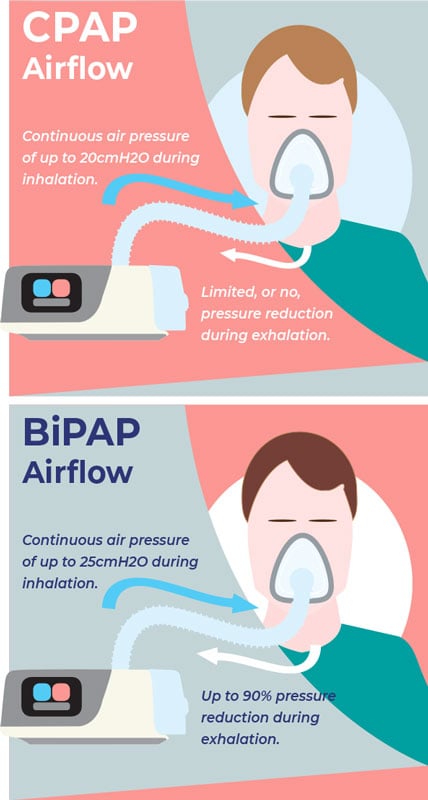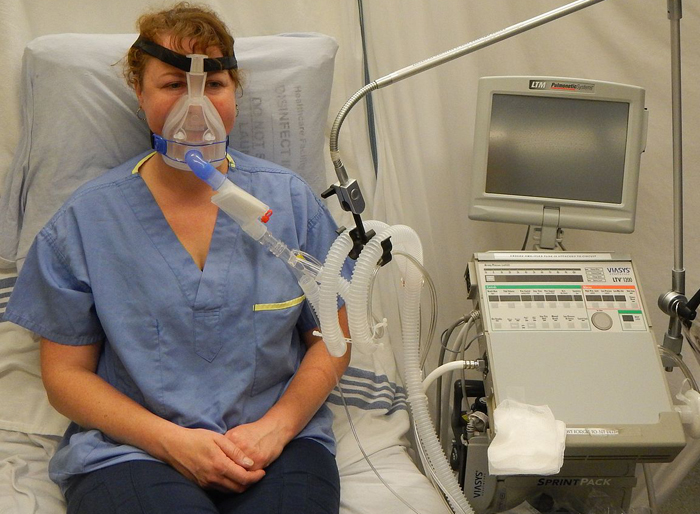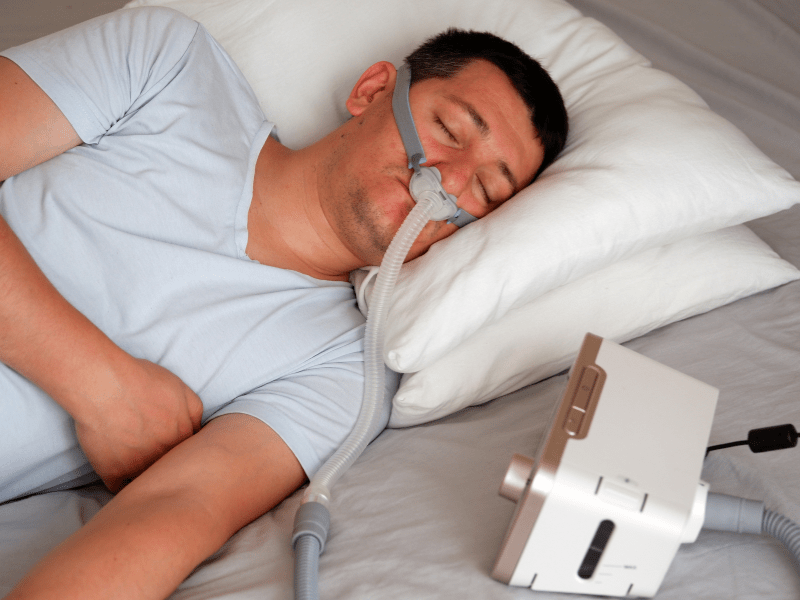Choosing the Right BiPAP Rental Package for Your Needs
Choosing the Right BiPAP Rental Package for Your Needs
Blog Article
Bipap vs. CPAP: Which Is the very best for Your Sleep Problem?
When browsing the intricacies of sleep conditions, the option between BiPAP and CPAP therapy is an essential consideration. While CPAP gives a constant air flow ideal for obstructive sleep apnea, BiPAP's dual pressure settings might improve convenience for those with more detailed respiratory issues.
Comprehending Sleep Disorders
Rest disorders incorporate a range of problems that interfere with typical sleep patterns, influencing both the high quality and duration of rest. These conditions can materialize in different kinds, including sleeplessness, rest apnea, narcolepsy, uneasy leg syndrome, and parasomnias. Each condition provides special obstacles, commonly bring about significant daytime exhaustion, cognitive problems, and emotional disturbances.
Insomnia is characterized by trouble falling or staying asleep, while rest apnea entails duplicated disruptions in breathing throughout sleep, typically bring about fragmented rest. Narcolepsy, on the various other hand, is noted by extreme daytime sleepiness and unexpected sleep attacks. Uneasy leg syndrome creates uncomfortable experiences in the legs, triggering an uncontrollable impulse to move them, which can likewise hinder the capability to drop off to sleep.
The impact of sleep problems extends past individual health, affecting general productivity, relationships, and lifestyle. Comprehending the specific nature of each disorder is essential for efficient medical diagnosis and therapy. As sleep health becomes progressively identified as a crucial component of general well-being, attending to these disorders is essential for enhancing both rest high quality and everyday functioning.
Exactly How CPAP Functions
Continual Favorable Air Passage Stress (CPAP) treatment is often employed as a primary treatment for obstructive rest apnea (OSA) The mechanism of CPAP entails using an equipment that supplies a stable stream of air through a mask worn throughout rest. This airflow keeps favorable pressure in the airway, avoiding the collapse or obstruction of the throat that can occur throughout sleep.
When a person takes in, the CPAP maker gives a continual circulation of air, ensuring that the air passage continues to be open - BiPAP Rental. This not just eases the signs of OSA, such as snoring and interfered with rest patterns, yet also minimizes the associated health dangers, including cardiovascular difficulties and daytime fatigue
The stress settings on a CPAP maker can be customized to fulfill individual patient requirements, frequently identified with a sleep research study. Overall, CPAP treatment has been revealed to considerably enhance the top quality of sleep and overall health and wellness for individuals enduring from obstructive rest apnea.
How BiPAP Functions
BiPAP, or Bilevel Favorable Respiratory Tract Stress, is a specialized type of non-invasive ventilation that is especially advantageous for patients with problems such as complex sleep apnea or respiratory system disorders. Unlike CPAP, which supplies a continual stream of air at a solitary stress, BiPAP gives two distinctive pressure settings: a greater inspiratory pressure for inhalation and a reduced expiratory stress for exhalation. This dual-pressure technique permits less complicated breathing, decreasing the initiative required throughout exhalation.
The device operates through a mask fitted over the nose or mouth, connected to an equipment that generates air pressure. When the individual inhales, the machine delivers the higher stress to aid with air flow, making sure that the air passage continues to be open. Upon exhalation, the machine instantly reduces the pressure, making it more comfy for the patient to take a breath out.

Key Differences Between BiPAP and CPAP

In contrast, BiPAP (Bilevel Favorable Airway Pressure) offers two various pressure setups: one for breathing and a reduced one for exhalation. This double pressure system permits even more comfortable breathing, specifically for clients that have a my sources hard time with breathing out versus a continual pressure. BiPAP is frequently recommended for clients with intricate sleep apnea, chronic obstructive lung illness (COPD), or those that call for added assistance throughout rest.
Moreover, the complexity of BiPAP devices typically results in a greater expense and requires more mindful titration than CPAP. BiPAP Rental. Comprehending these vital differences can help in acknowledging which device might be more suitable for particular rest problems, establishing the foundation for enlightened therapy choices
Picking the Right Treatment
Just how can one determine one of the most ideal therapy for taking care of rest disorders? The decision between BiPAP and CPAP therapy mainly depends upon the details attributes of the rest condition, the client's overall health, and their comfort with the gadget. CPAP, which provides a constant stream of air, is frequently recommended for obstructive sleep apnea (OSA) It maintains an open air passage during rest, successfully avoiding hypopneas and apneas.
On the other hand, BiPAP offers 2 degrees of pressure: one for breathing and a lower one for exhalation. This twin stress system is valuable for clients with intricate rest apnea or those that experience difficulty exhaling versus a her explanation constant stress. Furthermore, BiPAP is often advised for people with breathing conditions, such as persistent obstructive lung condition (COPD), where differing stress settings can enhance convenience and conformity.
Inevitably, an extensive assessment by a sleep expert, including a sleep research, can help determine which treatment aligns finest with the person's requirements. Aspects such as comfort, ease of use, and particular medical conditions need to also be thought about to optimize therapy end results.
Final Thought
In recap, both BiPAP and CPAP serve distinctive purposes in the monitoring of sleep disorders. CPAP is reliable for obstructive sleep find out here now apnea with constant air flow, while BiPAP uses twin pressure settings that enhance comfort for those with complex rest apnea or breathing concerns. The choice between these therapies need to be guided by individual needs and problems, necessitating a comprehensive analysis by a rest specialist to guarantee optimum therapy end results and improved quality of rest.

Overall, CPAP therapy has actually been revealed to substantially enhance the top quality of rest and general health and wellness for people experiencing from obstructive rest apnea.
BiPAP is usually suggested for clients with intricate rest apnea, persistent obstructive pulmonary condition (COPD), or those that call for extra support during sleep.
CPAP is effective for obstructive rest apnea via constant air flow, while BiPAP offers double pressure setups that boost convenience for those with intricate sleep apnea or breathing problems.
Report this page